This article was co-authored by Karen Litzy, PT, DPT. Dr. Karen Litzy, PT, DPT is a licensed physical therapist, international speaker, owner of Karen Litzy Physical Therapy, PLLC, and the host of the Healthy Wealthy & Smart podcast. With over 20 years of experience, she specializes in a comprehensive approach to practicing physical therapy utilizing therapeutic exercises, manual therapy, pain education, and home exercise programs. Karen holds a Master of Science in Physical Therapy and a Doctor of Physical Therapy from Misericordia University. Karen is a member of the American Physical Therapy Association (APTA) and is an official spokesperson for the APTA as a member of their media corps. She lives and works in New York City.
There are 13 references cited in this article, which can be found at the bottom of the page.
wikiHow marks an article as reader-approved once it receives enough positive feedback. This article received 12 testimonials and 80% of readers who voted found it helpful, earning it our reader-approved status.
This article has been viewed 1,711,855 times.
The spinal column runs down the middle of your back and contains the spinal cord, which is like a superhighway of nerves that connect your brain to every tissue in your body. Needless to say, the health of your spine is of paramount importance. From the lateral or side view, your spine contains three main curves, which are needed for flexibility and stability.[1] However, viewing your spine from the back, it should be straight and not deviate from side-to-side very much at all. Some people are born with abnormally curved spines, but ill health, poor posture and inadequate nutrition are more responsible for spinal pathology.
Steps
Understanding How to Care for Your Spine
-
1Maintain good posture. Maintaining good posture while you sit, walk and sleep is probably the most important thing you can do for the health of your spine.[2] Many people have sedentary jobs where they sit for most of the day, so the height, comfort and support of chairs are crucial. Make sure your office chair is adjustable (so you can customize it to your dimensions) and try to get one with lumbar support for your low back. At home, use cushions to support your back and prop your legs up while watching television.
- Try to change up your position throughout the day so you aren't holding the same position all the time. For instance, every 30 minutes or so, you might lean back occasionally or shift from one side to the other.[3]
- Instead of trying to hold perfect posture all day long, try this: Shrug your shoulders, then turn your palms forward. Then, reach for the ground and drop your shoulders. That's a good position for your head, neck, and shoulders, but it should still feel relaxed.[4]
- Make sure your computer screen is at eye level and centred in front of your chair, otherwise, you'll strain your neck and possible develop an abnormal curvature.
-
2Wear quality shoes. Your feet are crucial for good posture because they are the foundation for your entire body. As such, wear sturdy shoes with good arch support, a slightly raised heel (1/2 – 3/4 of an inch) and plenty of room for your toes. In contrast, avoid regularly wearing high-heeled shoes because they affect the body's center of gravity and induce compensatory alignment of the entire body — they can cause too much extension (called hyperlordosis) in the lumbar spine.[5]
- If you are really heavy, have flat feet or a short leg, then consider getting orthotics (custom-made shoe inserts) of heel lifts. Orthotics promote a healthy spine by supporting the arches and allowing better biomechanics when running or walking.
- Orthotics are made by podiatrists, medical specialists and some chiropractors.
Advertisement -
3Sleep on a firm mattress. You likely spend at least 1/3 of your life in your bed, so pay a little more attention to the quality of your mattress and how you sleep on it. For most people, firm mattresses are the best strategy in order to provide the necessary support for their spine. Memory foam top covers may also be helpful. You should consider changing mattresses every eight to 10 years. The thickness of your pillow should match the distance from the side of your head to the tip of your shoulder — a good rule of thumb to keep your neck aligned while sleeping.
- The best sleeping position for your spine is laying on your side, with your hips and knees slightly bent, and with a small pillow wedged between your thighs, which helps to keep your hips aligned also.[6]
- Try not to prop your head up with too many pillows while in bed reading because it will strain your neck and possibly reverse its normal lordosis (curve).
-
4Avoid carrying a heavy backpack or messenger bag. Even if you are only carrying the weight from class to class, or from school back home, the weight of a heavy backpack can have serious consequences on your spinal health, as it compresses your spine. It can cause spine curvature and may even prevent you from reaching your full height![7] Even worse, if you carry your backpack on only one shoulder or wear a bag that puts all the weight on one shoulder, such as a messenger-style bag, your spine can begin to curve.[8]
- When carrying a bag or backpack, make sure the weight is always evenly distributed between your shoulders. If you are carrying a very heavy suitcase or briefcase, make sure you don't always carry it on the same side.
- Consider a rolling backpack or briefcase.
- Try to make more trips to your locker throughout the day and swapping out textbooks instead of carrying them all with you. If your locker is far away and the passing periods are short, see if you can get a note from your doctor that will allow you a little extra time to go to your locker between classes.
-
5Exercise and be more active. Moderate exercise has many health benefits, including weight loss and increased muscle strength, which both positively impact the spine. Carrying too much weight puts excessive pressure on spinal joints, making them more susceptible to wearing out and becoming misaligned. In addition, stronger muscles keep bones and joints within their normal positions. Focus on exercises that work your shoulders, upper back, trunk, and abdomen. That will help support your ribcage, which will help strengthen your posture. Consult with a personal trainer if you're unsure of how to train properly.
- Every morning when you wake up, turn on your back and slowly do "snow angels" with your arms and legs for three to five minutes. The motions are great for warming up and lightly stretching many muscles important for keeping your spine aligned.
- Rowing exercises are great for strengthening your back and shoulders. If you can't use the rowing machine at the gym, use resistance bands to get a similar movement.[9]
- Pilates and yoga are other exercises that stretch and balance your body, especially the core muscles (abdomen, pelvis, low back), which form the foundation of good posture.
-
6Intake the necessary nutrients. To maintain strong, straight and healthy bones, certain nutrients are needed. Minerals such as calcium, magnesium and boron form the mineral matrix of bone and a deficiency of these can lead to bones that are too brittle and susceptible to fractures (known as osteoporosis). Vitamin D is also essential for bone health, and a lack of it leads to bones that are too soft and easily deformable (known as rickets in children or osteomalacia in adults).
- Vitamin D is produced by your skin when it's exposed to intense summer sunshine.
- The recommended dietary intake for calcium is 1,000 – 1,200 mg daily, depending on your age. The best natural sources of calcium are collards, kale, spinach, sardines, tofu, almonds and sesame seeds.[10]
Getting Helpful Treatments
-
1Get chiropractic adjustments. Regular treatments (perhaps monthly) from a chiropractor or osteopath is not only effective for spinal pain, but it may also keep you better aligned.[11] Chiropractors use a type of physical manipulation called spinal adjustments, which attempts to realign or unjam the small facet joints of the spine. Spinal adjusting can't reverse a scoliosis, but it can be important for maintaining normal spinal curvatures — especially following significant spinal trauma such as whiplash from a car accident.
- Adjustment of a spinal joint may result in a popping sound — the same as when you “crack” your knuckles. The noise is caused by the change of pressure within the joint, which results in gas bubbles being released.
- There is usually minimal, if any, discomfort involved with spinal adjustments.
-
2See a massage therapist. Get a back, shoulder, and/or neck massage from someone qualified to do so. Massage reduces muscle tension, which may be helpful for spinal alignment if you have tight muscles surrounding or attached to your spinal column and pulling on it. Massage is also effective for reducing stress, which is often a factor in developing poor posture, especially of the upper body.
- Massage can squeeze lactic acid, toxins and compounds that cause inflammation out of muscles and other soft tissues and into your bloodstream, so always drinks lots of water in order to flush them out of your body.
- Some massage therapists practice reflexology, which is the stimulation of parts of the foot to improve health. Ask your therapist to stimulate the points that are related to spinal health.
-
3Seek out physiotherapy (Physical Therapy). A physical therapist can show you specific and tailored stretches and strengthening exercises for your spine designed to keep your spine from deviating from being straight, and if need be, treat your spinal muscles with therapeutic treatments such as therapeutic ultrasound or electronic muscle stimulation. Exercises targeting the back extensors, neck flexors and pelvic muscles are crucial for good posture.
- Progressive resistance training with weights can halt or reverse bone loss in some cases, which can help with spinal health and alignment.
- If your muscles are sore following exercise or massage, then take an Epsom salt bath. The magnesium within the salt is great for relaxing tense muscles and dissolving pain.
-
4Get a prescription for medication. If you have osteoporosis or low bone density within your spine and fear fractures or deformity, then ask your doctor about medications that promote stronger bones, such as the numerous bisphosphonates that are on the market (Boniva, Reclast, Fosamax). Hormone-based medications that can help build bone density include raloxifene, calcitonin, and parathyroid hormone.
- Bisphosphonates can increase the risk of rare fractures and cause bone, joint or muscle pain.
- Teriparatide, a form of parathyroid hormone, increases the rate of bone formation and s the FIRST FDA approved drug for the treatment of osteoporosis and new bone formation.
-
5Consider surgery. Surgery of the spine should be considered a last resort for most people who have spinal problems, but sometimes it's the first choice for a child whose scoliosis is rapidly deforming their spine. The operation for scoliosis is a spinal fusion — essentially a "welding" process.[12] The basic idea is to realign and fuse together the curved vertebrae so that they heal into a single, solid bone. All spinal fusions use a bone graft, which are small pieces of bone that are placed into the spaces between the vertebrae to be fused. The bones then grow together, similar to when a broken bone heals.
- Metal rods are typically used to hold the spine in place until fusion happens. The rods are attached to the spine by screws, hooks, and/or wires and then usually removed at a later time.
- Possible complications from surgery include infection, allergic reaction to anesthesia, nerve damage and chronic swelling / pain.
Evaluating Your Spine
-
1Get a scoliosis screen. Scoliosis is an abnormal lateral curvature of the spine, usually in the thoracic region (area between your shoulder blades), that can lead to back pain and restricted movement.[13] For unknown reasons, some people are born with scoliosis, while others develop it during adolescence. Screenings are usually done in middle school by nurses, but most health professionals are qualified to examine you for scoliosis. Screening usually involves bending forward at the hips and seeing if one shoulder blade sticks up more than the other.
- Scoliosis screening is more important for kids than adults because some treatments (bracing or implantation of metal rods) can slow down or stop the progression of the condition while the spine is still developing.
- Girls have a greater risk of developing scoliosis and a much higher risk of the curve worsening and requiring treatment.[14]
-
2See a medical specialist. If you have a positive scoliosis screening or have reason to believe your spine is somehow abnormal, then see a medical specialist. An orthopedic surgeon will carefully examine your spine and likely take X-rays to better understand your problem. The specialist will look for relatively common spinal pathologies such as osteoarthritis, osteoporosis and herniated discs — all of which can lead to abnormal spinal curvature and biomechanics.[15]
- Specialists may also use CT scans, MRI, bone scans or more sophisticated X-rays to further diagnose your spinal condition.
- Surgery is rarely used to treat or cure spinal diseases or abnormalities.
-
3See a chiropractor or osteopath. Chiropractors and osteopaths are spinal specialists who rely on more natural methods to treat the spine and other parts of the body, and don't rely on pharmaceuticals or use invasive methods such as surgery. They can evaluate your spine for any abnormalities including unusual curves, restricted motion or tight muscles.
- Although some forward curvature in the thoracic spine or mid-back is normal, too much leads to a hyper-kyphosis or hunchback. The most common causes of a hyper-kyphosis are osteoporosis, arthritis, tumors and bad (slouching) posture.
- The thoracic spine can also be completely straight, which is actually considered abnormal and sometimes referred to as "military spine."
-
4Be aware of a small hemipelvis. Your pelvis is made up of two bones which are fused with ligaments. If one of these bones is smaller than the other, then it can cause you to sit or stand while tilting to toward the smaller bone.[16] This can lead to a curved spine in addition to many other health and posture problems. If you find that you often sit with your body tilted toward one side, ask your doctor about small hemipelvis.
- To correct small hemipelvis, you can get inserts for your shoes and carry around a book or magazine to sit on so you don't lean to one side.[17]
Expert Q&A
Did you know you can get expert answers for this article?
Unlock expert answers by supporting wikiHow
-
QuestionHow do I keep good posture?
 Karen Litzy, PT, DPTDr. Karen Litzy, PT, DPT is a licensed physical therapist, international speaker, owner of Karen Litzy Physical Therapy, PLLC, and the host of the Healthy Wealthy & Smart podcast. With over 20 years of experience, she specializes in a comprehensive approach to practicing physical therapy utilizing therapeutic exercises, manual therapy, pain education, and home exercise programs. Karen holds a Master of Science in Physical Therapy and a Doctor of Physical Therapy from Misericordia University. Karen is a member of the American Physical Therapy Association (APTA) and is an official spokesperson for the APTA as a member of their media corps. She lives and works in New York City.
Karen Litzy, PT, DPTDr. Karen Litzy, PT, DPT is a licensed physical therapist, international speaker, owner of Karen Litzy Physical Therapy, PLLC, and the host of the Healthy Wealthy & Smart podcast. With over 20 years of experience, she specializes in a comprehensive approach to practicing physical therapy utilizing therapeutic exercises, manual therapy, pain education, and home exercise programs. Karen holds a Master of Science in Physical Therapy and a Doctor of Physical Therapy from Misericordia University. Karen is a member of the American Physical Therapy Association (APTA) and is an official spokesperson for the APTA as a member of their media corps. She lives and works in New York City.
Physical Therapist Give yourself permission to move around throughout the day. Every so often, slouch forward or backwards, lean to one side or the other, or change where you're sitting. If you watch a cat or a dog, they usually don't stay in one position for more than about 30 minutes—they move when they start to feel uncomfortable.
Give yourself permission to move around throughout the day. Every so often, slouch forward or backwards, lean to one side or the other, or change where you're sitting. If you watch a cat or a dog, they usually don't stay in one position for more than about 30 minutes—they move when they start to feel uncomfortable.
References
- ↑ http://www.mayfieldclinic.com/PE-AnatSpine.htm#.VZSTeUb9O1s
- ↑ http://www.scoi.com/importance-good-posture
- ↑ Karen Litzy, PT, DPT. Physical Therapist. Expert Interview. 27 August 2020.
- ↑ Karen Litzy, PT, DPT. Physical Therapist. Expert Interview. 27 August 2020.
- ↑ http://www.spine-health.com/wellness/ergonomics/five-more-tips-reducing-back-pain-office
- ↑ http://www.urmc.rochester.edu/encyclopedia/content.aspx?ContentTypeID=1&ContentID=4460
- ↑ http://www.ncbi.nlm.nih.gov/pubmed/20023607
- ↑ http://www.ncbi.nlm.nih.gov/pubmed/20023607
- ↑ Karen Litzy, PT, DPT. Physical Therapist. Expert Interview. 27 August 2020.
- ↑ http://www.whfoods.com/genpage.php?tname=nutrient&dbid=45
- ↑ http://www.acatoday.org/level3_css.cfm?T1ID=13&T2ID=61&T3ID=152
- ↑ https://www.srs.org/patients-and-families/conditions-and-treatments/adults/scoliosis
- ↑ http://www.mayoclinic.org/diseases-conditions/scoliosis/basics/definition/con-20030140
- ↑ http://www.campbellclinic.com/pediatric-spine/?page_id=84
- ↑ http://www.healthypeople.gov/2020/topics-objectives/topic/Arthritis-Osteoporosis-and-Chronic-Back-Conditions
- ↑ http://bodyacheescape.com/small-hemipelvis/
- ↑ http://bodyacheescape.com/small-hemipelvis/
About This Article
To straighten your spine naturally, maintain good posture by wearing shoes with good arch support and a slightly raised heel. Additionally, align your body correctly when you’re sleeping by lying on your side with your knees slightly bent, and a small pillow placed between your thighs. You should also avoid carrying heavy backpacks or shoulder bags, which can compress your spine and eventually result in spine curvature. However, you can minimize these effects by building strong bones and joints through exercises like weight training and yoga. For more advice, including how to tell when you should seek medical treatment to straighten your spine, keep reading!


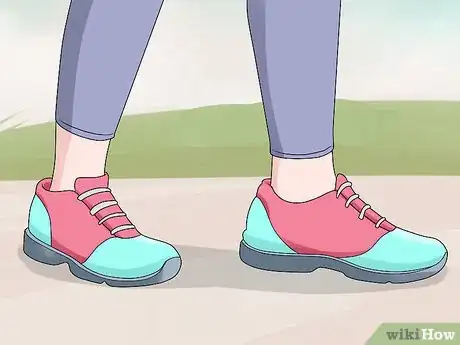


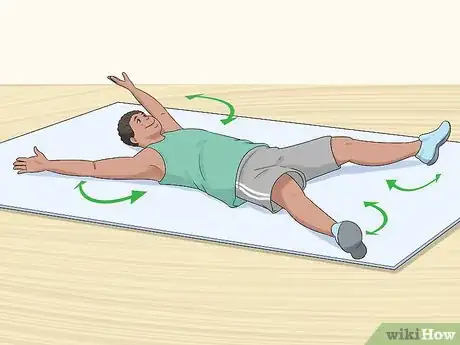


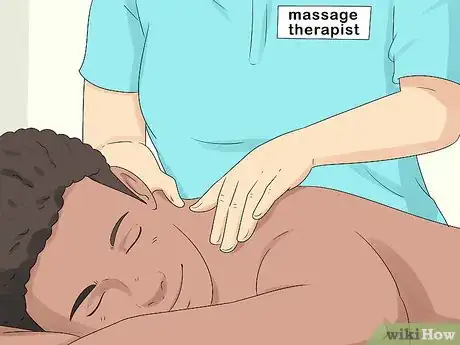








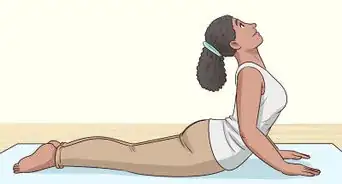


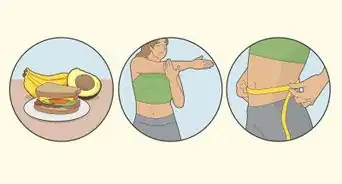

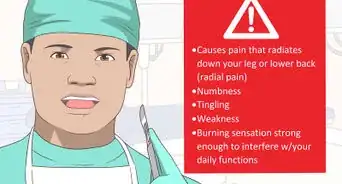
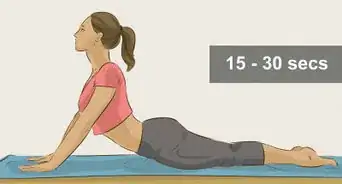



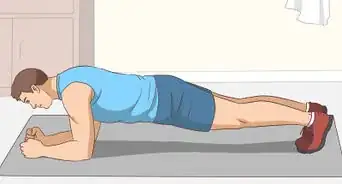
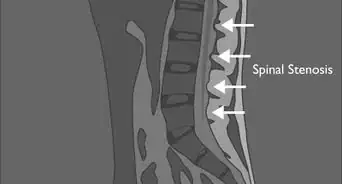









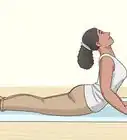

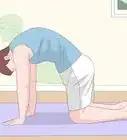



































Medical Disclaimer
The content of this article is not intended to be a substitute for professional medical advice, examination, diagnosis, or treatment. You should always contact your doctor or other qualified healthcare professional before starting, changing, or stopping any kind of health treatment.
Read More...